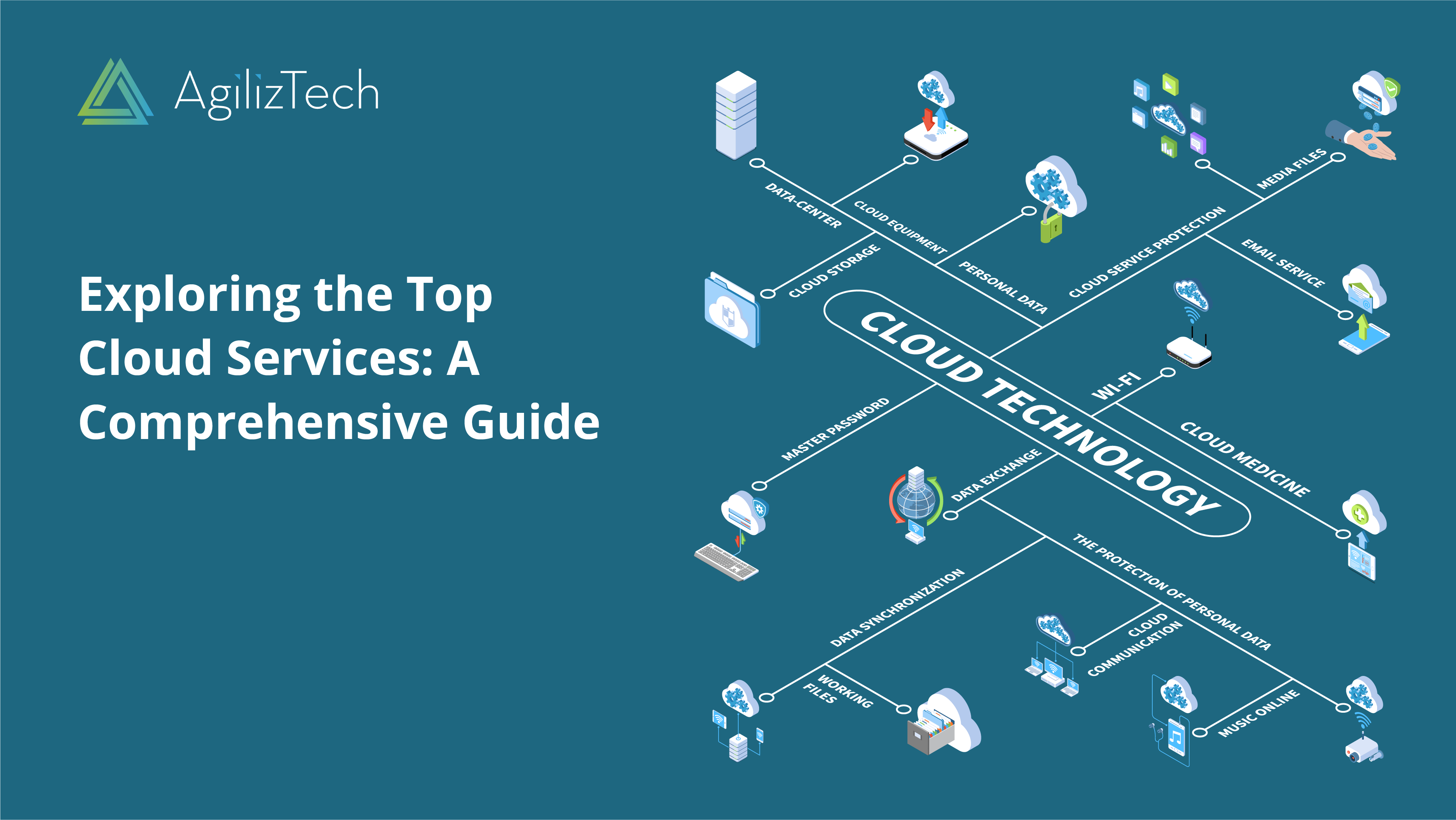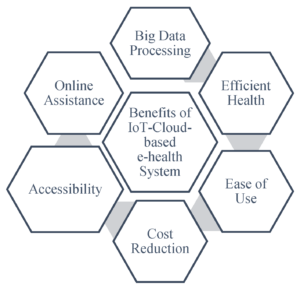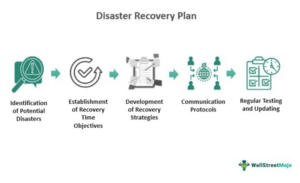Cloud infrastructure has revolutionized the way businesses operate in the digital age. It provides a scalable and flexible platform for storing, processing, and delivering data and applications. To harness the full potential of cloud infrastructure, it is essential to understand the concept of a cloud infrastructure diagram. In this comprehensive guide, we will delve into the intricacies of cloud infrastructure diagrams, their benefits, key components, design principles, integration with DevOps, implementation challenges, and future trends.
What is a Cloud Infrastructure Diagram?
A cloud infrastructure diagram is a visual representation of the various components that constitute a cloud environment. It offers a comprehensive overview of the servers, networks, storage, and other infrastructure elements involved in delivering cloud-based services. This diagram provides insights into the architecture and relationships between different components, enabling stakeholders to understand and manage the infrastructure effectively.
The Purpose of a Cloud Infrastructure Diagram
The primary purpose of a cloud infrastructure diagram is to enhance clarity and understanding of the complex infrastructure that supports cloud-based operations. It allows stakeholders, including IT administrators, developers, and business leaders, to visualize the relationships between different components and the flow of data within the infrastructure. By providing a clear and concise representation, a cloud infrastructure diagram facilitates effective decision-making, troubleshooting, and optimization of the cloud environment.
The Significance of Cloud Infrastructure Diagrams
Cloud infrastructure diagrams play a crucial role in ensuring efficient resource utilization and cost optimization. They enable organizations to identify redundant components, bottlenecks, and areas for improvement within their cloud infrastructure. By visualizing the infrastructure, organizations can make informed decisions regarding scaling, load balancing, and resource allocation, leading to enhanced performance and reduced operational costs.
Benefits of Using a Cloud Infrastructure Diagram
Utilizing a cloud infrastructure diagram offers numerous advantages for organizations. Let’s explore some of the key benefits:
Improved Scalability and Flexibility
A cloud infrastructure diagram provides insights into the scalability and flexibility of the infrastructure. By visualizing the components and their relationships, organizations can identify areas where additional resources are needed and make informed decisions regarding scaling up or down. This flexibility allows businesses to adapt quickly to changing demands and optimize resource allocation.
Enhanced Security and Disaster Recovery
Security and disaster recovery are paramount in the cloud environment. A cloud infrastructure diagram helps organizations identify potential vulnerabilities and implement robust security measures. By understanding the flow of data and the security measures in place, stakeholders can ensure the confidentiality, integrity, and availability of their cloud infrastructure. Furthermore, in the event of a disaster, a well-designed diagram aids in swift recovery and restoration of services.
Streamlined Collaboration and Communication
A cloud infrastructure diagram serves as a common reference point for stakeholders involved in the management and maintenance of the cloud environment. It facilitates effective communication and collaboration between IT teams, developers, and business leaders. By visualizing the infrastructure, stakeholders can align their efforts, share insights, and make informed decisions, leading to improved efficiency and productivity.
Key Components of a Cloud Infrastructure Diagram
A cloud infrastructure diagram consists of several essential components that collectively make up the cloud environment. Let’s explore the key components:
Virtual Machines (VMs)
Virtual machines form the foundation of cloud infrastructure. They allow organizations to run multiple operating systems and applications on a single physical server, enabling efficient resource utilization. A cloud infrastructure diagram visualizes the distribution of virtual machines within the infrastructure, illustrating their relationships with other components.
Networks and Connectivity
Networks and connectivity are vital for seamless communication between different components of the cloud infrastructure. A cloud infrastructure diagram showcases the network architecture, including routers, switches, firewalls, and load balancers. It illustrates the connections between various components, ensuring efficient data transfer and optimal performance.
Storage and Database Systems
Storage and database systems play a crucial role in cloud infrastructure. A cloud infrastructure diagram highlights the different types of storage, such as object storage, block storage, and distributed file systems. It also visualizes the databases used within the infrastructure, including relational databases, NoSQL databases, and data warehouses.
Content Delivery Network (CDN)
A content delivery network enhances the performance and availability of cloud-based services by delivering content from geographically distributed servers. A cloud infrastructure diagram showcases the CDN architecture, illustrating the points of presence (PoPs) and their relationships with other infrastructure components.
Designing an Effective Cloud Infrastructure Diagram
To create an impactful cloud infrastructure diagram, it is essential to follow certain design principles and best practices. Let’s explore some key considerations:
Choosing the Right Tools
There are various tools available for designing cloud infrastructure diagrams, such as Lucidchart, Microsoft Visio, and draw.io. It is crucial to select a tool that aligns with your organization’s requirements and provides the necessary features for creating comprehensive and visually appealing diagrams.
Ensuring Clarity and Simplicity
A cloud infrastructure diagram should be clear and easy to understand for all stakeholders. Avoid cluttering the diagram with unnecessary details and focus on representing the relationships and flow of data in a concise and straightforward manner. Use color coding and labeling to enhance clarity.
Including Relevant Details
While simplicity is crucial, it is equally important to include all the relevant details in the diagram. Ensure that all components, connections, and relationships are adequately represented. This level of detail allows stakeholders to have a comprehensive understanding of the infrastructure.
Considering Scalability and Future Growth
Design the cloud infrastructure diagram with scalability in mind. Account for potential future growth and expansion of the infrastructure by leaving room for additional components and connections. This foresight ensures that the diagram remains relevant and useful as the organization’s cloud environment evolves.
Common Cloud Infrastructure Diagram Patterns
Cloud infrastructure diagrams can follow various patterns depending on the specific requirements and objectives of an organization. Let’s explore some commonly used patterns:
Single Server Configuration
In this pattern, a single server hosts all the necessary components and services required for the cloud infrastructure. It is suitable for small-scale applications or organizations with limited resource needs. The cloud infrastructure diagram showcases the server and its connections to the network, storage, and other components.
Multi-Server Configuration
In a multi-server configuration, the cloud infrastructure consists of multiple servers, each dedicated to specific functions or services. This pattern allows for better resource allocation and scalability. The cloud infrastructure diagram visualizes the servers and their relationships, illustrating how they work together to deliver cloud-based services.
Hybrid Cloud Configuration
A hybrid cloud configuration combines public and private cloud infrastructures. It allows organizations to leverage the benefits of both environments while addressing specific security or compliance requirements. The cloud infrastructure diagram showcases the integration of public and private cloud components, illustrating the connections and data flow between the two environments.
Integration of Cloud Infrastructure Diagram with DevOps
DevOps practices play a crucial role in managing and maintaining cloud infrastructure. Let’s explore how a cloud infrastructure diagram can seamlessly integrate with DevOps:
Deployment Automation and Orchestration
A cloud infrastructure diagram can serve as a reference point for automating and orchestrating the deployment process. By visualizing the infrastructure, DevOps teams can create deployment pipelines, define infrastructure as code, and automate the provisioning of resources, ensuring consistent and efficient deployments.
Continuous Monitoring and Alerting
Monitoring the cloud infrastructure is essential for identifying performance issues, security threats, and potential bottlenecks. A cloud infrastructure diagram can be integrated with monitoring tools to provide real-time visibility into the health and status of different components. Alerts and notifications can be set up based on the diagram, enabling proactive troubleshooting and maintenance.
Efficient Troubleshooting and Root Cause Analysis
During incidents or outages, a cloud infrastructure diagram can aid in troubleshooting and root cause analysis. By visualizing the relationships between components and their dependencies, DevOps teams can quickly identify the affected areas and determine the underlying causes. This accelerates the resolution process and reduces downtime.
Challenges in Cloud Infrastructure Diagram Implementation
While cloud infrastructure diagrams offer numerous benefits, their implementation can come with certain challenges. Let’s explore some potential hurdles and insights on overcoming them:
Complexity and Scale
Cloud infrastructure can be complex and vast, making it challenging to capture all the components and relationships in a single diagram. To overcome this challenge, organizations can consider creating multiple diagrams that focus on specific aspects or layers of the infrastructure. This approach allows for better clarity and manageability.
Maintaining Diagram Accuracy
Cloud infrastructure is dynamic and constantly evolving. New components are added, configurations change, and infrastructure grows. To ensure the accuracy of the diagram, it is essential to establish processes for keeping it up to date. Regular reviews, documentation, and collaboration with stakeholders can help maintain the accuracy of the diagram.
Collaboration and Communication
Collaboration and communication among stakeholders can be a challenge when working with cloud infrastructure diagrams. To overcome this, organizations can leverage cloud-based collaboration tools that allow real-time editing and commenting on the diagram. Regular meetings and discussions can ensurealignment and understanding among all stakeholders involved in the cloud infrastructure.
Case Studies: Successful Cloud Infrastructure Diagrams
Real-life examples of organizations that have effectively implemented cloud infrastructure diagrams can provide valuable insights and inspiration. Let’s explore some case studies:
Company A: Optimizing Resource Allocation
Company A, an e-commerce platform, utilized a cloud infrastructure diagram to optimize their resource allocation. By visualizing their infrastructure, they identified areas of overutilization and underutilization. They made data-driven decisions to scale up resources in high-demand areas and consolidate resources in underutilized areas. This resulted in improved performance and cost savings for the company.
Company B: Enhancing Security Measures
Company B, a financial institution, implemented a cloud infrastructure diagram to enhance their security measures. By visualizing the flow of data and the connections between components, they identified potential vulnerabilities and implemented additional security measures, such as encryption and access controls. This increased their overall security posture and ensured compliance with industry regulations.
Company C: Streamlining Collaboration and Communication
Company C, a software development firm, used a cloud infrastructure diagram to streamline collaboration and communication among their teams. By having a shared visual representation of the infrastructure, their IT administrators, developers, and business leaders could easily understand and discuss the various components and their interdependencies. This led to improved efficiency, reduced misunderstandings, and faster decision-making.
Future Trends in Cloud Infrastructure Diagrams
The field of cloud infrastructure is continuously evolving. Let’s explore some future trends that are shaping the future of cloud infrastructure diagrams:
Serverless Architectures
Serverless architectures, where organizations rely on cloud providers to manage infrastructure and automatically scale resources, are gaining popularity. In the future, cloud infrastructure diagrams may evolve to incorporate serverless components, highlighting the interactions between serverless functions and other infrastructure elements.
Edge Computing
Edge computing, which brings computation and data storage closer to the source of data generation, is becoming more prevalent with the rise of Internet of Things (IoT) devices. Cloud infrastructure diagrams of the future may include edge computing components, showcasing the distribution of resources across different edge locations and their relationships with centralized cloud infrastructure.
Artificial Intelligence (AI) Integration
As AI continues to advance, cloud infrastructure diagrams may incorporate AI-powered analytics and automation. These diagrams could provide intelligent insights, such as identifying performance bottlenecks, predicting resource demands, and suggesting optimization strategies based on historical data and AI algorithms.
Implementing Your Cloud Infrastructure Diagram
Implementing a cloud infrastructure diagram requires careful planning and execution. Here are some actionable steps to guide you through the process:
Collaborate with Stakeholders
Engage with all relevant stakeholders, including IT teams, developers, and business leaders, to gather insights and ensure that the cloud infrastructure diagram aligns with their requirements and objectives. Collaboration will help you capture a comprehensive view of the infrastructure.
Choose the Right Level of Detail
Consider the intended audience of the cloud infrastructure diagram and choose the appropriate level of detail. For technical teams, a more granular diagram may be necessary, while for higher-level discussions, a simplified overview may suffice. Tailor the diagram to suit the needs of different stakeholders.
Continuously Update and Optimize
A cloud infrastructure diagram is not a one-time creation. As the infrastructure evolves, regularly update the diagram to reflect any changes. Ensure that it remains accurate and up to date to avoid confusion and miscommunication. Additionally, continuously optimize the diagram by incorporating feedback and insights from stakeholders.
In conclusion, a cloud infrastructure diagram serves as a crucial tool for understanding, planning, and optimizing cloud-based operations. By visualizing the complex components and relationships within a cloud infrastructure, organizations can streamline their processes, enhance security, and achieve cost-efficiency. Integration with DevOps practices further enhances the effectiveness of the diagram by enabling automation, monitoring, and troubleshooting.
As the digital landscape continues to evolve, embracing the power of cloud infrastructure diagrams will be essential for businesses aiming to stay ahead in the competitive market. By considering future trends such as serverless architectures, edge computing, and AI integration, organizations can prepare themselves for the challenges and opportunities that lie ahead. Remember, creating a comprehensive and well-designed cloud infrastructure diagram is only the first step. Continuous monitoring, adaptation, and collaboration among stakeholders will ensure its efficacy in supporting your organization’s growth and success.



